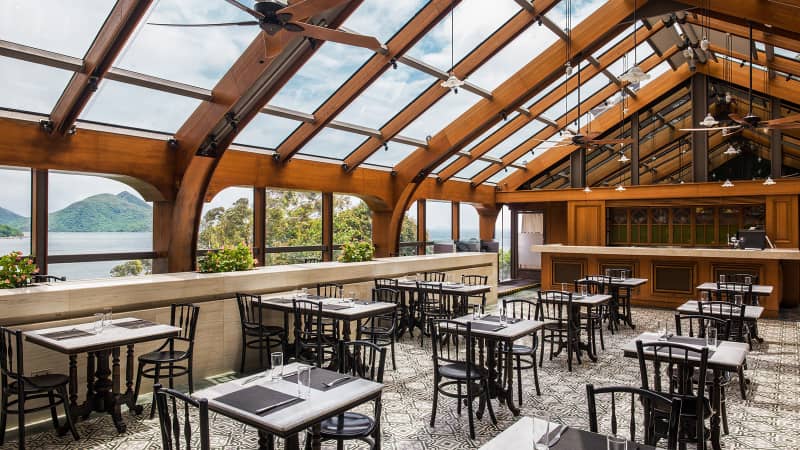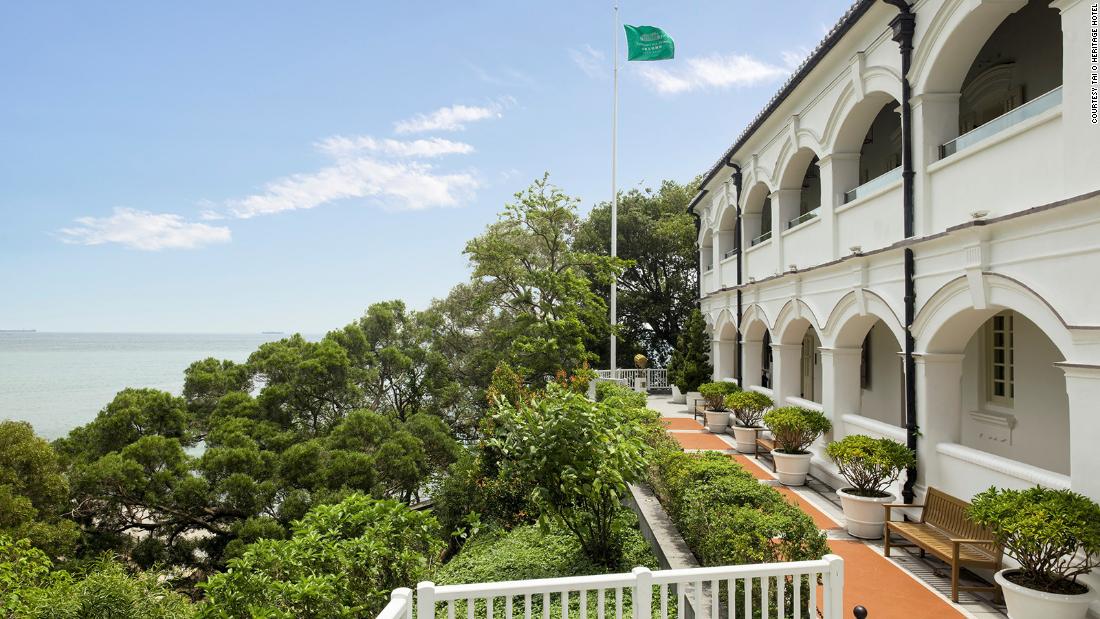Products You May Like
But on the island’s western tip, on a spit of land that curls into the South China Sea, is a fishing village called Tai O that feels like it has been frozen in time. There are still old-fashioned wooden houses built on stilts, narrow shops selling handwoven baskets and strips of dried seafood, and a complete lack of car traffic.

The famous stilt houses of Tai O, on Lantau Island.
Lilit Marcus/CNN
On the northern tip of Tai O is a former police station that was converted into the upscale nine-room Tai O Heritage Hotel.
Though it could have closed down amid the downturn in tourism, the hotel opted to stay open — and became a haven not for tourists, but instead for locals seeking an escape from their claustrophobic city apartments.
While hotel management did opt to cancel the three daily property tours that are usually available for visitors, the hotel and its glassed-in rooftop restaurant, The Tai O Lookout, remain open for bookings.
What’s changed, though, are the demographics of the people making the bookings. In a typical year, about 75% of the hotel’s guests are local. Since February 2020, that number has hovered between 92 and 99%.

The Tai O Lookout’s menu features dishes with local ingredients like shrimp paste and preserved eggs.
Courtesy Tai O Heritage Hotel
“The hotel has fortunately been running close to full or full during weekends in recent two months, and higher than expected occupancy during weekdays at an average over 70 – 80%,” a representative for the Tai O Heritage Hotel, tells CNN Travel.
Some weekends have even been so popular that the hotel has had to place would-be guests on a wait list.
And the booming business isn’t just good for the economy — it’s good for the community.
“Tai O Heritage Hotel is operated as a non-profit social enterprise,” the representative explains. “All proceeds and revenue will be fully contributed to hotel maintenance, community engagement and commitment to Tai O village, to promote heritage conservation, tourism and green living.”
That includes paying to repair the historic stilt houses and sponsoring art projects like a 3-D mural about local history and landmarks.
The same hygiene regulations that are in effect throughout Hong Kong are in place in Tai O as well: everyone wears masks, guests must fill out health declaration forms before being allowed to check into their rooms and bottles of hand sanitizer are placed on nearly every available surface.
Guests who arrive for meals at the Tai O Lookout — breakfast is for hotel guests only, while dinner is open to the public — must have their temperatures taken, use hand sanitizer upon arrival, sit no more than four to a table and have their tables placed at least one and a half meters apart.
Even with masks on, it’s a rare place where stressed Hongkongers — many of whom have been cooped up in their apartments for nearly three months — can breathe freely.

